QuestionHi,
Our Black Molly fish gave birth 8 days ago. The next day she got white spots all over her so we put her in a hospital tank and treated her for Ich (that's what the pet store thought she had and they said the treatment would kill the babies). She did fine for a couple days, then she laid around for a couple days and we thought she was dying. Now yesterday and today the spots are gone and she is swimming around normally. Her eyes look like they might be a little swollen though. Can I put her back in our regular tank? It is a 48 gallon tank and we have all her babies in a little breeding tank inside (not sure if that is the right thing to do either?). We are very new to fish (our friend is in the service and just gave them to us 2 weeks ago before he left) so would appreciate any help!!! Thanks so much!
Beth
AnswerHi Beth;
She might just be having a hard time recovering from the stress of giving birth. Mollies need very clean water to thrive so if the water was new, being in the hospital tank helped her feel better. Do a partial water change of 25% in the main tank to help the water there be more fresh as well. Use a water conditioner and be sure the new water is the same temperature as the old water. Do these water changes at least once a week. She may be suffering ill effects of being in older water for too long where she used to live if the tank was set up at your house with new water. Most hobbyists don't know how important water changes every week really are. Another possibility is that the tank is going through a break-in period. If the tank is new, that's what's going on. I will include my article on new tanks at the end of this letter just in case.
Replace 25% of the water every week as normal maintenance. Water changes lower nitrate which is an invisible dissolved waste toxin that builds up over time. (Not nitrite, that's a different and very dangerous toxin) Nitrate is a waste product from the beneficial bacteria that lives in your filter, gravel and decorations in your tank. The bacteria feeds on fish waste and eventually makes nitrate. It is only removed by water changes or mass quantities of live plants as long as there is a low population of fish.
The babies will need their own tank if they don't grow very well in the breeder trap. Not much room in that little box. Feed the babies crumbled up regular fish food several times a day. If you have an extra tank to put them in, don't add gravel to it. It will only get full of excess food that the babies can't get to. Siphon off any leftover food every day so it doesn't poison the water. Make a 25% water change every day or every other day for fast growth and good appetites in the nursery tank.
Here is my article on new tanks;
**********
New Tank Syndrome or Break-in Period
So you have a new tank and you filled it up, put the filter together, mounted the heater into place and turned on the lights. You have all the plants and decorations where you want them....
You are ready for fish.
But, your filter is not ready for a full tank of fish yet.
The filter is running and moving the water and cleaning out crud, right? Of course!
But a very important part of your filter is the part you can't see. An aquarium filter removes the larger visible stuff, but it also must remove the dissolved fish waste that turns into ammonia in the water. To do this, special bacteria must grow in the filter system and on the particles of gravel in the bottom of your tank. This process occurs even on a limited scale in little fish bowls that have no filter in them.
This is "New-Tank Syndrome" or the "Break-in Period". The entire process takes 6 to 8 weeks to complete because these "nitrifying" bacteria grow quite slowly.
Start off with only one or two hardy fish (no more than 2 total inches of fish) for every ten gallons of water and don't add more until the 6 to 8 weeks has gone by. Hard to be patient, but it is worth it to keep your fish alive and healthy. As a matter of fact, the bacteria cannot develop without fish in the tank. You can let that tank sit forever without fish in it, but as soon as the first fish goes in the process begins. Avoid changing the filter pads during break-in. This removes the bacterial colonies that are essential to a balanced aquarium. You can rinse the filter pad out in a container of aquarium water. This will preserve most of the bacteria colonies while still allowing your filter to flow freely. Even using bacteria additives and water conditioners when you first set up the tank will not make a tank begin the cycle by itself. If there are no fish to provide food (fish waste) for the bacteria, the beneficial bacteria cultures will die and you will have to start the colonies all over again once fish are added to the tank. Once the tank has completed the initial cycle, you can change the filter pads every 4 weeks or so. But for now, just rinse them.
Feed your new fish VERY lightly. Any excess food will cause additional waste your system cannot afford to have right now. If you see food floating around or lying on the plants and gravel after five minutes, too much food is going into the tank. Cut back a little each time you feed until it is ALL gone 5 minutes after you feed them. Feed them once a day.
During this "break-in period" your tank will become cloudy and milky looking. You may have to tolerate this for the entire break-in period but it is only temporary. Changing 25% of the water three times a week until the break-in period is over helps a great deal. Changing water reduces the ammonia and nitrites that rise while the bacteria continues to multiply. If ammonia and/or nitrites become too high, your fish will become stressed and possibly die. Use a good water conditioner when you replace the water and make sure it is the right temperature to avoid shocking your fish.
When the break-in is over after 6 to 8 weeks and there are no nitrites or ammonia present in the water you can slowly add more fish. Add one or two every week until you reach the desired population. This allows the bacteria to adjust to the new population every time before adding more. Monitor the nitrites and ammonia to be sure they don't come up. If they do, make a 25% water change and check them again. Don't add the next fish until the levels are down again.
The safe maximum population for any size tank is one inch of adult fish for every gallon of water in the tank. Do some research to be sure of the fish you are interested in. Even though they are small when you buy them, you have to base your population calculations on full-sized adult fish. Many hobbyists have up to two inches per gallon but this can be risky. If a water quality issue arises or a disease occurs it will spread fast and furious in an over-populated tank. In any case, 25% water changes every week to two weeks are absolutely essential for the health of your fish.
Following these guidelines will help you get your new tank on the right track.
**********
At Your Service;
Chris Robbins
Come on over and join us on the freshwater fish forum at About.com to get even more information too;
http://freshaquarium.about.com/od/questionsanswers/a/naavigateforum.htm

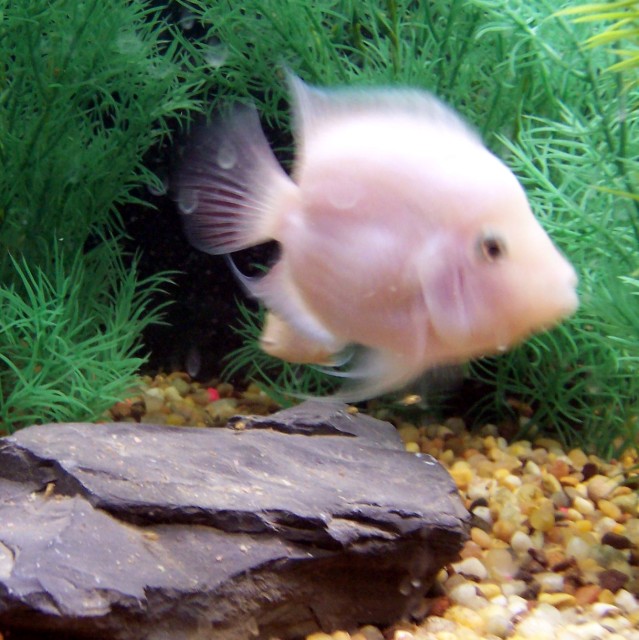 Help Identify This Fish!
Question
The Unknown Fish
Can you help me to identify t
Help Identify This Fish!
Question
The Unknown Fish
Can you help me to identify t
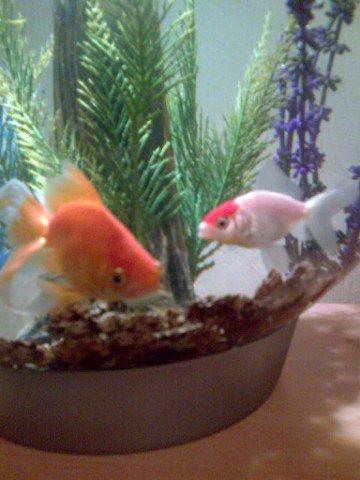 Gold fantail
Question
The Brain and Dory
Hi,
My fish is about 4 yea
Gold fantail
Question
The Brain and Dory
Hi,
My fish is about 4 yea
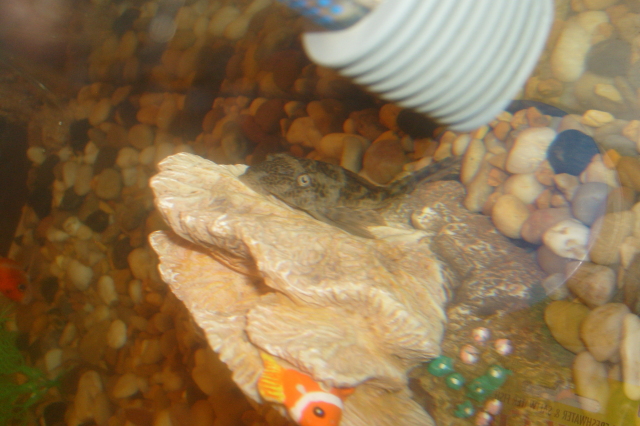 My Common Pleco
Question
Pleco
I am a beginner who has made a HU
My Common Pleco
Question
Pleco
I am a beginner who has made a HU
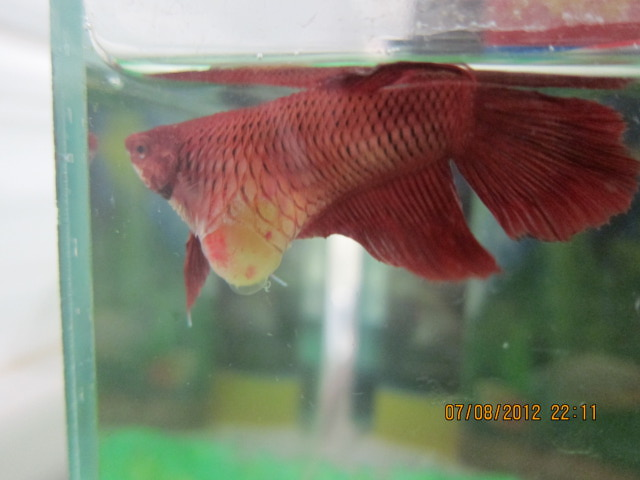 Bloated Belly
Question
My Beta fish Bloated Belly
Hello
Bloated Belly
Question
My Beta fish Bloated Belly
Hello
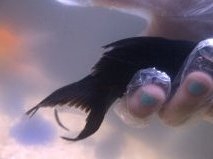 Black Moor with a Tail
Question
Black Moor Black Moor
Hi Jaymie,
Black Moor with a Tail
Question
Black Moor Black Moor
Hi Jaymie,